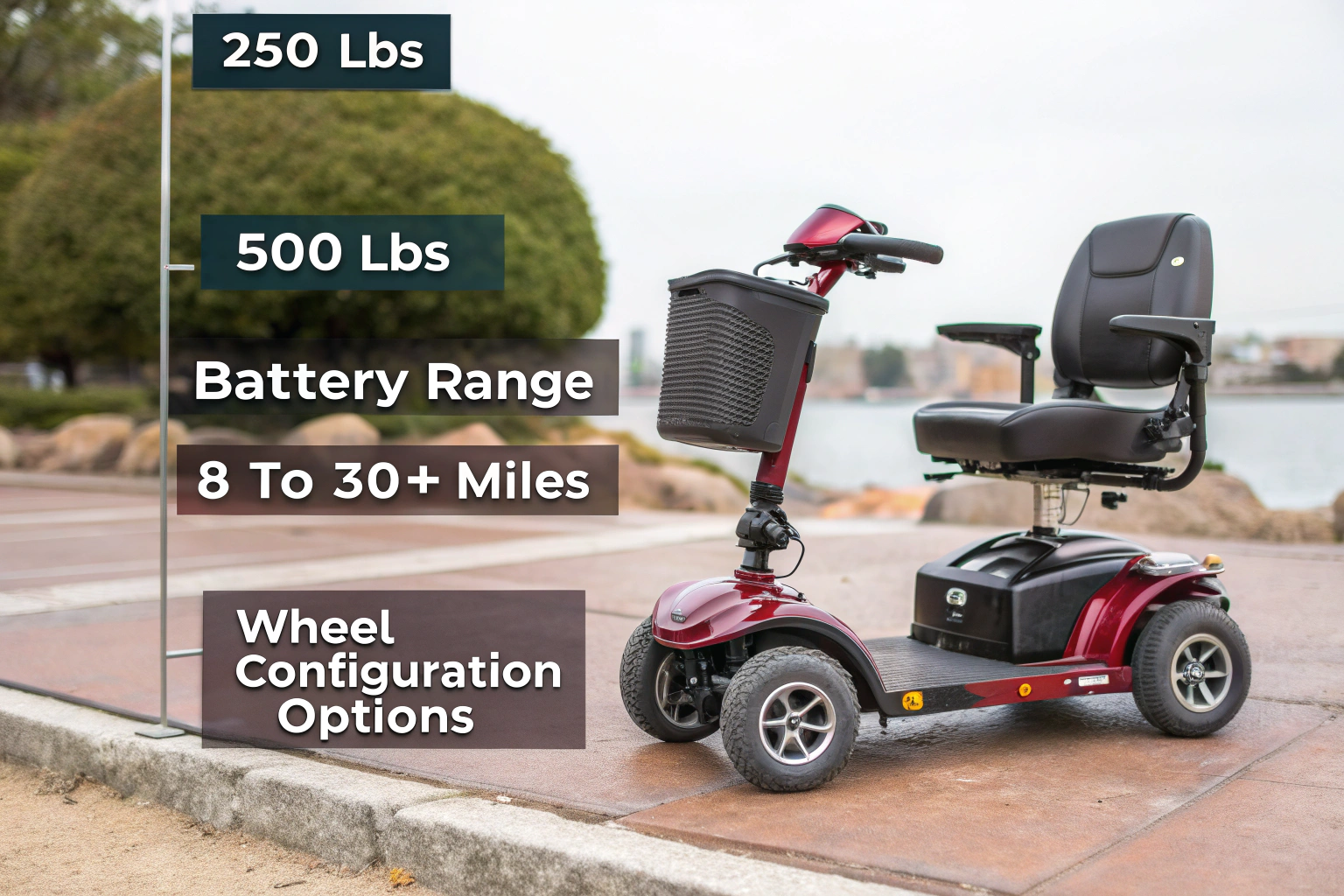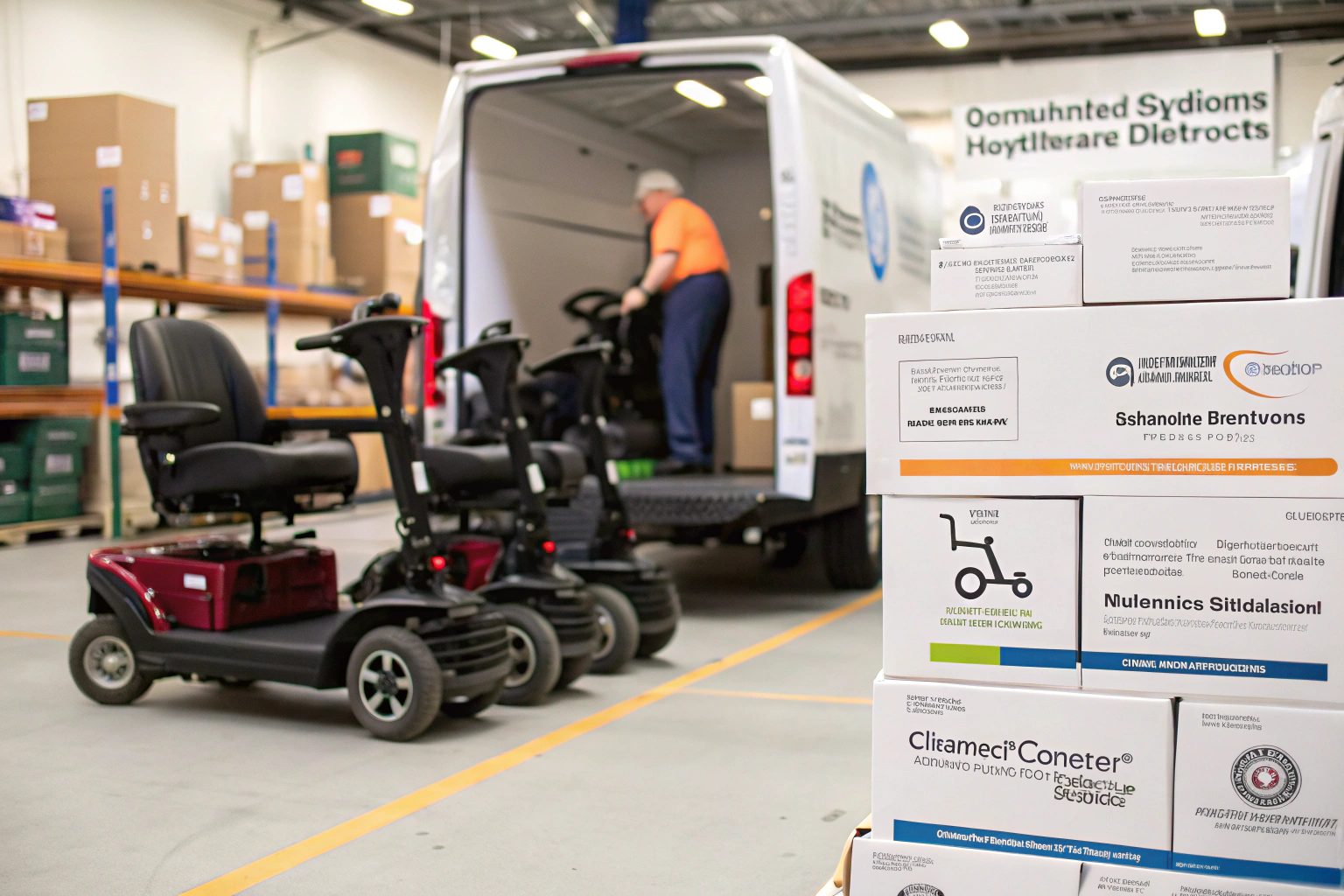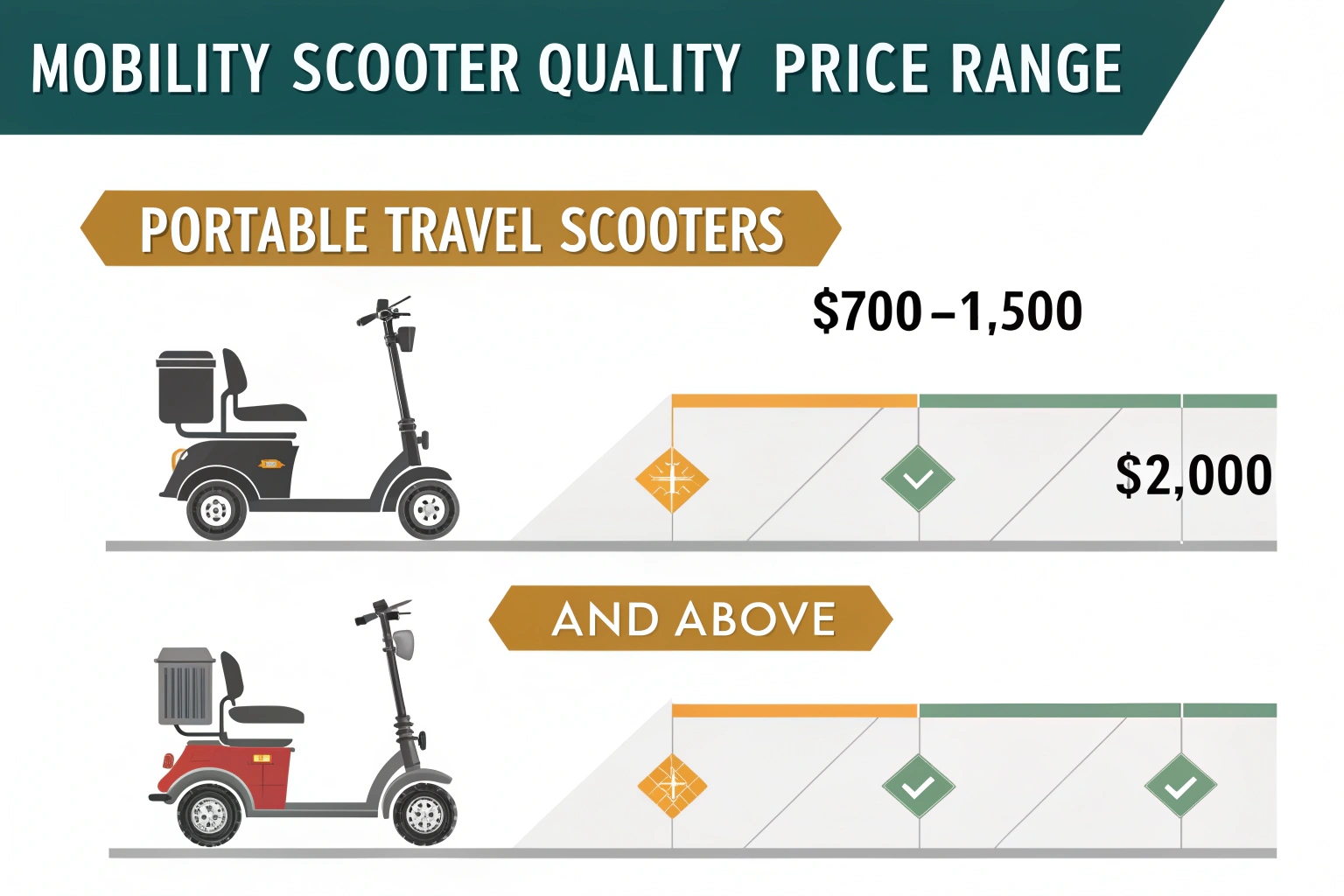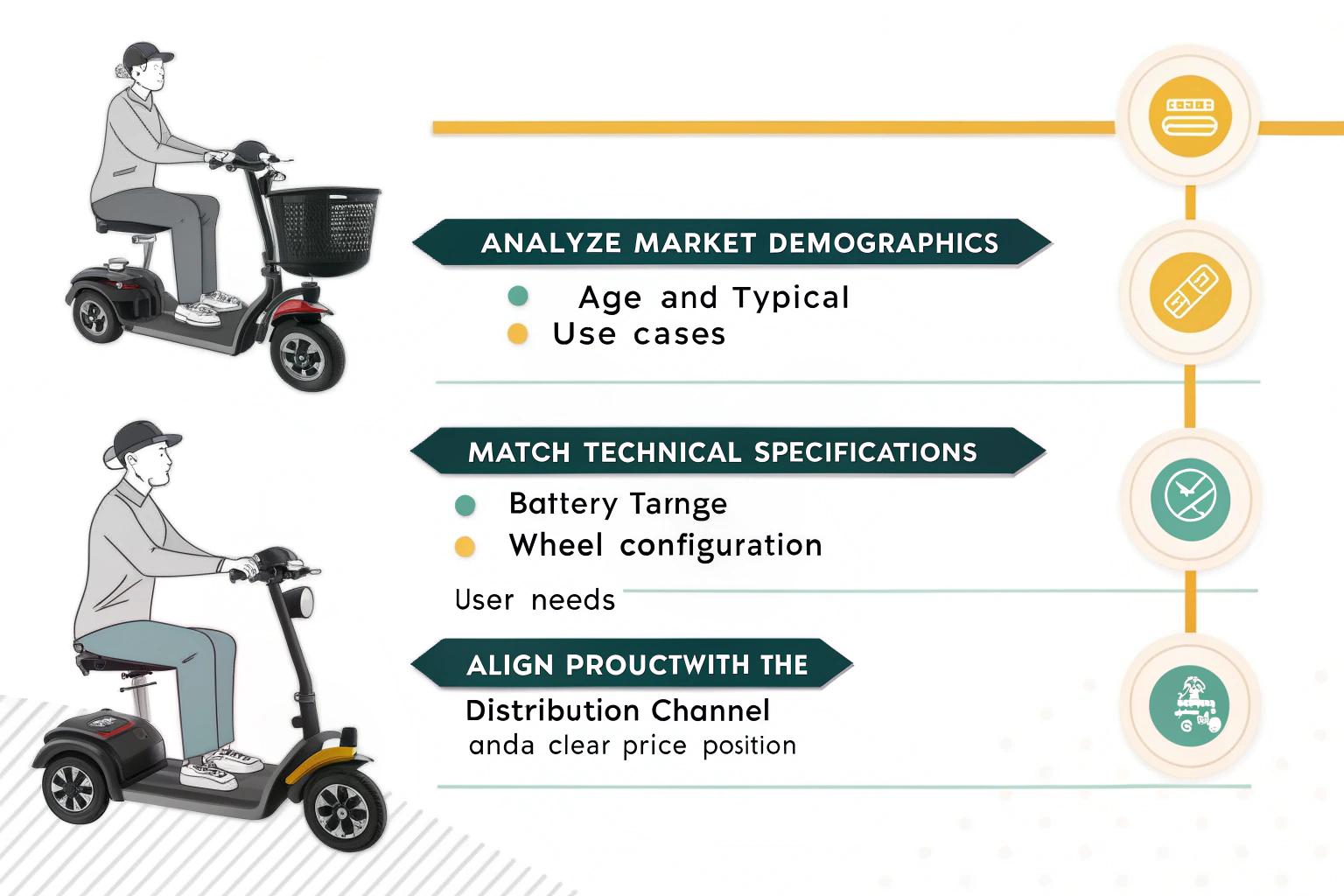Choosing the wrong scooter models can lead to dead stock and wasted capital. This hurts your cash flow and your reputation. The key is a clear strategy to match products to buyers.
To choose the right mobility scooter, you must first analyze your market's key demographics, like age and typical use cases. Then, match technical specifications—such as battery range and wheel configuration—to those user needs. Finally, align your product with your distribution channel and a clear price position.
Finding the perfect product for your customers isn't about luck; it's about following a logical process. If you get this wrong, even the best scooter will fail to sell. If you get it right, you build a sustainable business. Let's start with the most critical factor: understanding exactly who you are selling to. Everything else depends on this first step.
What Are the Key Demographic Segments Driving Mobility Scooter Demand?
Selling a single scooter model to everyone is a common mistake. You end up with a product that is too complex for some and not robust enough for others. Understanding your specific user groups is the only way to stock scooters they will actually purchase and use.
The primary market segments are elderly users, typically 65 and older, who prioritize stability and ease of use. Another key group is individuals with disabilities who require reliable daily mobility. A growing segment is younger users who may have temporary injuries or chronic conditions.
From our factory floor, we see these differences in the orders we ship worldwide. For example, clients in Japan and parts of Europe, where the aging population is large, often request models with extra comfort features, simple controls, and enhanced safety ratings. Their end-users prioritize feeling secure over speed or long-range. In contrast, an importer in a country with sprawling suburban communities might find more success with a scooter that appeals to a wider age range. These buyers look for durability for outdoor paths, better suspension, and sometimes a more modern design. As a business owner, you must ask: am I serving an elderly person who needs a simple trip to the local store, or a more active individual who needs to cover more ground? The answer changes the type of scooter you should import.
User Groups and Their Primary Needs
| Demographic Segment | Primary Need | Typical Scooter Features |
|---|---|---|
| Elderly (65+) | Safety, Stability, Simplicity | 4-wheels, comfortable captain's seat, intuitive controls |
| Users with Disabilities | Reliability, Accessibility | High weight capacity, long battery life, custom options |
| Younger/Active Users | Portability, Performance | 3-wheels for maneuverability, lightweight, foldable design |
| Institutional Users | Durability, Low Maintenance | Solid tires, simple electronics, robust frame |
How Do Technical Specifications Impact Market Positioning and Buyer Selection?
The technical data on a specification sheet can seem overwhelming. If you choose the wrong features, your scooter becomes either too expensive for your market or fails to meet basic customer expectations. Let's translate the most important specs into real-world benefits and market fit.
Key specifications like weight capacity (250 lbs to over 500 lbs), battery range (8 to 30+ miles), and wheel configuration (3-wheel vs. 4-wheel) are critical. Four-wheel models offer stability for uneven terrain, while three-wheelers provide tighter turning for indoor use.

When a new client asks us for a quote, one of my first questions is always, "What is the environment where the scooter will be used?" This tells me almost everything I need to know. For instance, a 4-wheel scooter is the default choice for outdoor use or for users who need maximum stability. It handles grass, gravel, and uneven sidewalks much better. A 3-wheel scooter, however, is perfect for indoor environments like shopping malls or retirement communities because its sharp turning radius makes it easy to navigate tight corners and aisles.
Then we discuss the battery. Lead-acid batteries are the traditional choice; they are cheaper upfront and reliable. However, they are heavy and have a shorter lifespan. Lithium-ion batteries cost more, but they are much lighter and can handle more charge cycles. For a portable, foldable scooter that a user needs to lift into a car, a lithium battery is almost essential. For a heavy-duty model that stays at home, lead-acid can be a smart way to keep the retail price down. It's a classic trade-off between upfront cost and long-term value.
Key Specification Trade-Offs
| Spetsifikatsiya | Option A (Lower Cost) | Option B (Higher Performance) | Best For... |
|---|---|---|---|
| Wheels | 3-Wheel | 4-Wheel | Indoor maneuverability (A) vs. Outdoor stability (B) |
| Batareya | Qo'rg'oshin kislotasi | Lithium-Ion | Budget-conscious buyers (A) vs. Portable/Long-life needs (B) |
| Motor kuchi | 250W - 350W | 500W+ | Flat terrain, indoor use (A) vs. Hills, heavy users (B) |
| Shinalar | Solid / Puncture-Proof | Pneumatic / Air-Filled | Low maintenance, smooth surfaces (A) vs. Maximum comfort, all-terrains (B) |
What Are the Primary Distribution Channels and Government Procurement Opportunities?
You have sourced a great product, but how will you get it to the end-user? Without a clear distribution strategy, your scooters will gather dust in a warehouse, invisible to the people who need them. Let's look at the main ways to sell these vehicles, including the often-overlooked government channel.
The main distribution channels include specialized healthcare equipment distributors, e-commerce platforms, and direct B2B sales to facilities like airports or retirement communities. A significant opportunity exists in government contracts, which offer large, stable orders but require strict adherence to certifications and quality standards.

Your sales channel defines the product you need. I once worked with a client from Morocco who was bidding on a government tender to provide scooters for a disability support program. The requirements were incredibly specific. They needed CE certification, a certain turning radius, a minimum battery range, and extensive documentation on spare part availability. We worked closely with them to ensure the scooter we provided met every single line item.
This is completely different from another client of ours who sells on Amazon in the UK. Their focus is on aesthetics, compact packaging for lower shipping costs, and a lightweight, foldable design. They need great product photos and simple instructions for self-assembly. For them, OEM branding on the scooter and the box is more important than a CE certificate. As a factory, we can serve both clients, but they are buying fundamentally different packages. You must decide if you are a B2G (Business-to-Government) player, a B2C e-commerce seller, or a traditional B2B distributor to local medical stores. Each path requires a different product and support strategy.
How Should Dealers Balance Cost, Quality, and Market Positioning?
Competing only on price is a race to the bottom that no one wins. However, adding too many expensive features can push your scooter beyond what your local market can afford. The secret to long-term success is finding the value "sweet spot" that your specific customers are looking for.
To succeed, you must match your scooter's quality and features to a specific price range. For example, portable travel scooters often fall in the $700-$1,500 retail range, while heavy-duty models can command $2,000 or more. Decide your target position first, then work backward to select the right components.

This is the final and most important step, where all your research comes together. When an importer lays out their market analysis for me, we can begin the configuration process. They might say, “My market is price-sensitive, and the main use is indoors. We need to hit a retail price of around $1,000.” Instantly, I know we should start with a 3-wheel frame, a standard lead-acid battery, and a simple tiller console. We avoid costly extras like a full suspension system or a high-backed captain’s seat.
On the other hand, a distributor from a wealthier market might say, “My customers demand the best. They need to handle hills and travel long distances. The budget is flexible.” For them, we would design a robust 4-wheel scooter with a powerful motor, a high-capacity lithium battery, and premium pneumatic tires for a smooth ride. The factory cost is higher, but so is the retail price and the perceived value. Your job as an importer is not to buy the cheapest scooter or the one with the most features. It’s to buy the right scooter for your target price point.
Finding Your Market Position
| Market Position | Target Customer | Key Features | Factory Focus |
|---|---|---|---|
| Budget & Portable | Price-conscious, needs portability | Lightweight, foldable, simple controls | Cost control, lead-acid battery |
| Mid-Range All-Rounder | Seeks balance of features & price | Good range, 3 or 4 wheels, some comfort | versatile design, popular features |
| Mukofot & Heavy-Duty | Needs performance, has higher budget | High weight capacity, long-range, full suspension | Durability, lithium battery, safety |
Xulosa
Choosing the right mobility scooter is a deliberate process. Success comes from deeply understanding your customer, matching technical specs to their reality, selecting the correct sales channel, and balancing cost with quality.



